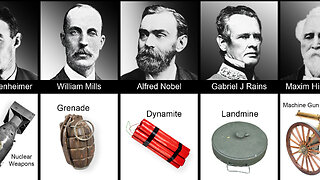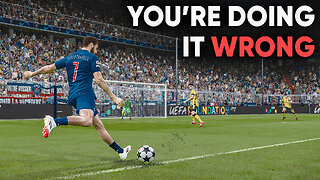Premium Only Content

NITRATES NITRIC OXIDE AND BALTIC COLD ICE WATER PLUNGE
So my feet did get cut kicking the ice so the ice may present an ongoing risk I will need to sort out with some more research in how people manage to not cut themself on sharp ice and still somehow swim. Today there was unexpectly ice formed in the water not only at the entry area but also in the water.... this was unexpected and while I was raring to go after my warmup jog and exercise I wasn't sure how to swim and if it was safe to swim and break the ice as I went with my arms or if my feet would be injured, so exited a little early and didnt get an actual swim. Will have to come up with a plan moving forward as the lake starts to freeze. I actually woke up with the thought of nitric oxide in my head this morning so it is what I researcheda d little and should research a little more on.. I think nitrates are really important if you want to do the cold water stuff because I think there is an assoication between nitric oxide production and use and cold water adaptation but this is a hunch at this point.
SOME RANDOM EXTRACTS AND THOUGHTS . The NO activity was observed in the basal condition and increased with noradrenaline stimulation, showing a correlation with oxygen consumption in the warm (25 degrees C)-acclimated control rats. Cold acclimation (5 degrees C, 5 weeks) or immobilization stress adaptation (3 h daily, 25 degrees C, 5 weeks) caused enhanced NO activity in the basal condition in comparison with the control. We suggest that NO is involved in enhancement of the thermogenic functions of BAT in rats. The results indicate that thyroid hormones are required for increased thermogenic capacity to occur as an adaptation to long-term cold
brown fat cells isolated from cold-acclimated hamsters, under identical conditions, showed almost complete absence of adenosine control. Thus acclimation to cold induced a desensitization to adenosine by physiological means. To evaluate the molecular mechanism underlying desensitization to adenosine,
adenosine desensitization process may be located at the Gi protein-adenylate cyclase interaction.
Stimulating brown adipose tissue (BAT) energy expenditure could be a therapy for obesity and related metabolic diseases. Achieving this requires a systems-level understanding of the biochemical underpinnings of thermogenesis. To identify novel metabolic features of active BAT
enzymes which synthesize lipids from cytosolic acetyl-coA are among the most robustly increased proteins after cold acclimation, consistent with recent studies highlighting the importance of anabolic de novo lipogenesis in BAT. In addition, many mitochondrial proteins are hyperacetylated by cold acclimation, including several sites on UCP1, which may have functional relevance
, BAT is activated by the sympathetic nervous system in response to cold exposure or certain high fat diets
norepinephrine triggers CIT in brown adipocytes by stimulating β3-adrenergic receptor signaling and cAMP synthesis, which activates protein kinase A (PKA). PKA phosphorylates CREB, which binds to the cAMP response element and induces transcription of many target genes including the uncoupling protein UCP1. UCP1 localizes to the inner mitochondrial membrane and dissipates the proton motive force as heat, thus uncoupling it from ATP synthesis. This is thought to be the primary mechanism of heat-generation in BAT, although alternate heat-generating pathways have been reported
60 proteins altered (∼3%, 26 increasing, 34 decreasing) in response to mild cold and 232 proteins altered (∼11%, 119 increasing, 113 decreasing) in response to severe cold
THIS HAS ME WONDER THOUGH, HOW DOES THIS FUNCTION UNDER KETOSIS??? OR FASTING STATES? WILL IT LEAD TO CELLULAR CATOBOLISM OR IS THERE A KETONE PATHWAY TO COLD ADAPTATION?
The ATP synthase complex also has a mild cold-dependent increase, which could reflect a compensatory mechanism to generate sufficient ATP in the face of uncoupled respiration
orrelation with acetylcarnitine and mitochondrial protein acetylation levels suggest a role for acetylated amino acids in buffering mitochondrial acetyl-CoA.
WILL CONSUMING PROTIEN POWDER OR AMINO ACIDS FUEL THIS ACETALYZIATION UPTAKE MORE AND RESULT IN LESS UPTAKE FROM THE BODY STORES?
-
 16:09
16:09
Professor Nez
1 hour ago🚨BIDEN'S DOCTOR STONEWALLS: What Are They HIDING?
8.77K8 -
 LIVE
LIVE
I_Came_With_Fire_Podcast
10 hours agoThe U.S. is Reverse Engineering UAP Technology Faster Than China
302 watching -
 40:27
40:27
The Rubin Report
3 hours agoThis Democrat Is Willing to Be Honest About How They Lost Their Way | Jim Himes
125K93 -
 52:39
52:39
Her Patriot Voice
3 hours ago $1.81 earnedLIVE From SAS with Savannah Craven
14.2K -
 1:09:27
1:09:27
Wendy Bell Radio
7 hours agoPet Talk With The Pet Doc
22.5K9 -
 8:12
8:12
Sideserf Cake Studio
4 hours ago $0.53 earnedTake the ULTIMATE Real or Cake Challenge
10.2K2 -
 39:26
39:26
SouthernbelleReacts
6 days ago $0.81 earned"Daaaang! My First Time Watching Joe Dirt | Southern Comedy Reaction"
9.79K2 -
 4:14
4:14
Data illusion
5 days ago $0.36 earnedWeapons and their inventors
8.31K1 -
 12:20
12:20
Machete Gaming
4 days ago $0.17 earnedFootball Gaming is BROKEN in 2025… Here’s the FIX
5.52K -
 17:49
17:49
Oliur
9 days ago $0.28 earnedWhoop 5.0 vs Apple Watch - Don't choose the wrong one.
5.69K2